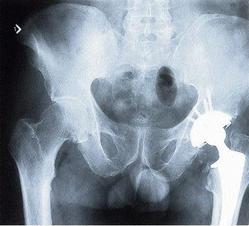Vitamin A linked to hip fractures ... maybe?
Published: Wednesday | January 21, 2009

Eulalee Thompson - BE WELL
Controversy still surrounds a possible link between vitamin A intake and an increase in the risk for osteoporosis in post-menopausal women. It is vitamin A as retinol (found in vitamin supplements, liver, cod liver oil, fortified cereals and fortified milk and margarine) and not beta-carotene intake (which converts to vitamin A in the body and found especially in fruits and vegetables) which science is linking to disease.
Some scientists question any such link between taking small amounts of vitamin A and osteoporosis. They say that assertion would contradict known biological effects of retinol while not denying that extremely large intake of vitamin A, leading to vitamin A toxicity, is known to adversely affect bone health.
Numerous studies have been published on the topic. For example, one of the earlier studies published in Environmental Nutrition (December 1998) concluded, after studying 422 women in Sweden between 28 and 76 years old, that doubling the recommended intake of vitamin A could dramatically increase osteoporosis risk. The study found that hip fracture risk increased by 68 per cent for every one milligram increase in dietary retinol intake, confirming findings in animal studies.
Affects calcium absorption
Vitamin A intake and hip fractures, researchers say, are unusually high in Sweden, so it is perhaps not surprising that some of these studies focus on that population. Take this rather small study of only nine healthy individuals in Sweden, it pointed to the vitamin A in a serving of liver could possibly interfere with vitamin D's ability to promote calcium absorption. Researchers in Sweden also studied 250 women with a hip fracture against a control group of 875 participants.
They compared bone mineral density and retinol intake and found that taking more than 1,500 mcg of retinol per day was associated with reduced bone mineral density and an increased risk for hip fracture when compared to women taking less than 500 mcg retinol per day.
The recommended daily intake of vitamin A for women is 700 mcg (2,310 IU) and 900 mcg (3,000 IU) for men.
An 18-year follow-up
There was a large study, the Nurses' Health Study, which studied 72,337 post-menopausal women which also concluded that long-term intake of high amounts of vitamin A could promote hip fractures in post-menopausal women. In this study, there was an 18-year follow-up of participants and 603 hip fractures from low or moderate trauma were identified.
The researchers indicated that those women with the highest quintile intake of retinol (taking 2,000 mcg (6,667 IU) or more of vitamin A per day) had an 89 per cent higher risk for hip fracture when compared with the women in the lowest quintile (taking less than 500 mcg (1,667 IU) per day).
Below toxic levels
The study results suggest that even vitamin A intake well below toxic levels could affect bone health and even amounts found in many multi-vitamin products could be harmful to bone health.
Health experts' advice on preventing osteoporosis:
Take adequate amounts of calcium and vitamin D (from sunlight and diet).
Exercise regularly to build strong bones and slow down bone loss.
Don't smoke as this increases bone loss, perhaps by interfering with oestrogen and calcium absorption.
Don't drink too much alcohol.
Limit caffeine intake.
Eulalee Thompson is health editor and a professional counsellor; email: eulalee.thompson@gleanerjm.com.



